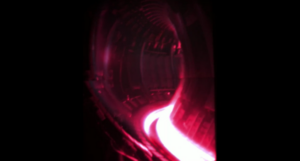Fusion power may be a more realistic prospect than you think. As Motherboard reports, researchers at the Energy Department’s Lawrence Livermore National Laboratory have discovered that a new magnetic field setup more than tripled the energy output of the fusion reaction hotspot in experiments, “approaching” the level required for self-sustaining ignition in plasmas. The field was particularly effective at trapping heat within the hotspot, boosting the energy yield.
The hotspot’s creation involved blasting 200 lasers at a fusion fuel pellet made from hydrogen isotopes like deuterium and tritium. The resulting X-rays made the pellet implode and thus produce the extremely high pressures and heat needed for fusion. The team achieved their feat by wrapping a coil around a pellet made using special metals.
The notion of using magnets to heat the fuel isn’t new. University of Rochester scientists found they could use magnetism to their advantage in 2012. The Lawrence Livermore study was far more effective, however, producing 40 percent heat and more than three times the energy.
Scientists make “exciting” breakthrough in Amelia Earhart mystery
Practical fusion reactors are still many years away. The output is still far less than the energy required to create self-sustaining reactions. The finding makes ignition considerably more achievable, though, and that in turn improves the chances of an energy-positive fusion system. This also isn’t the end of the magnetism experiments. A future test will use an ice-laden cryogenic capsule to help understand fusion physics. Even if ignition is still distant, the learnings from this study could provide a clearer path to that breakthrough moment.
Source: Engadget
Ask me anything
Explore related questions





